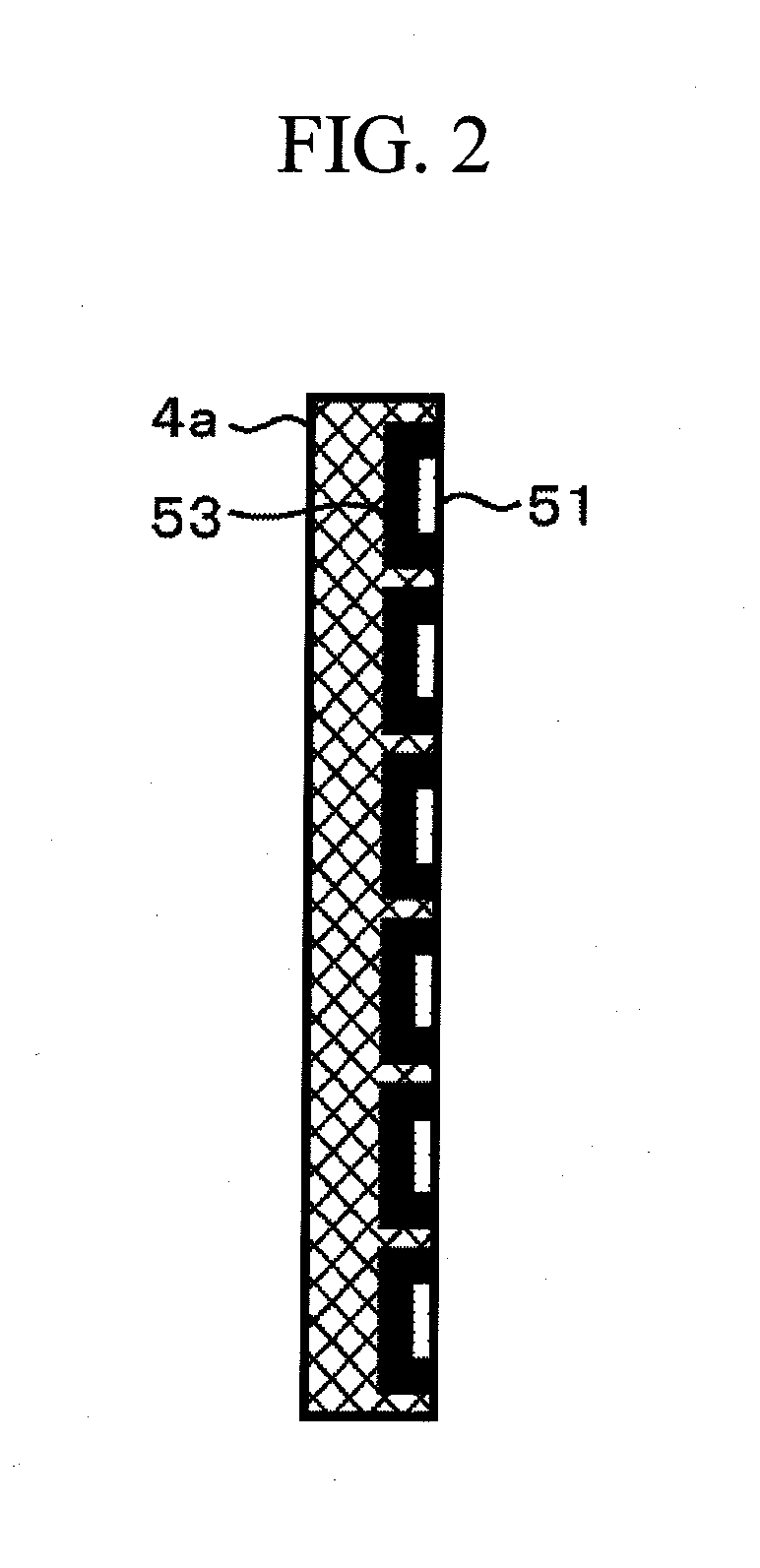Rechargeable metal-air battery
a rechargeable metal-air battery technology, applied in the field of metal-air batteries, can solve the problems of increasing weight, the theoretical upper limit of the battery's energy density, and the limited practical use of the metal-air battery as a non-rechargeable metal-air battery, so as to reduce the increase of contact resistance and improve battery performance and service life.
- Summary
- Abstract
- Description
- Claims
- Application Information
AI Technical Summary
Benefits of technology
Problems solved by technology
Method used
Image
Examples
embodiment 1
[0052]FIG. 1 illustrates a cross-sectional structure of the rechargeable metal-air battery of the present embodiment.
[0053]As a matter of convenience, the rechargeable metal-air battery of the present embodiment uses lithium as negative-electrode metal to be used for a negative electrode and a nonaqueous solvent as an electrolytic solution.
[0054]Note that zinc, aluminum, magnesium, or the like may be used as the negative-electrode metal, in addition to lithium. In addition, an aqueous solvent may be used as the electrolytic solution.
[0055]Furthermore, although in the present embodiment, metal is used for the negative electrode, the negative electrode may not be made of metal. Any material which undergoes dimensional change upon charging and discharging, as will be described later, results in advantageous effects of the present invention available. Therefore, a carbon material or an oxide material may be used, as long as the material can store and release metal ions. In the case of a...
embodiment 2
[0098]The dimension-absorbing member 4 and the gas-supplying member 5 may at least be able to functionally satisfy two requirements, i.e., the members can (1) absorb dimensional changes and (2) supply gases, respectively.
[0099]FIG. 2 is a schematic view illustrating an embodiment in which a dimension-absorbing member and a gas-supplying member are integrated with each other.
[0100]As illustrated in FIG. 2, a reaction gas flow path 51 is provided in a porous body 4a having elastic deformation capacity. The advantageous effects of the present embodiment are also attained by performing a sealing treatment with a reaction gas sealer 53, so that a reaction gas flowing through this flow path flows into the positive electrode 2 alone.
[0101]This sealing treatment can be performed in a simplified manner by impregnating the porous body with a sealing agent. Thus, it is possible to reduce the number of components and decrease a height in the stacking direction of the battery.
[0102]This sealing ...
embodiment 3
[0103]The pressure-applying unit 60 is not limited to the one illustrated in FIG. 1. Alternatively, the pressure-applying unit 60 may be configured so that stacked cells are in a state of being pressurized while in use.
[0104]FIG. 3 is a schematic view illustrating an embodiment in which the pressure-applying unit is simplified.
[0105]FIG. 3 illustrates a configuration in which a tightening battery container 65 and an insulating cushion 66 are disposed.
[0106]This is an example in which a pressure is applied by disposing the insulating cushion 66, and then a rechargeable metal-air battery as a whole is fixed in a canned manner with the battery container 65 and a closing cover 67.
[0107]As the insulating cushion 66, rubber, for example, may be used.
[0108]As the battery container 65, metal or a laminate film may be used.
[0109]As a method of assembly, unit cells 10 are stacked in the battery container 65, current terminals 71 and 72 and an insulating cushion 66 are stacked, a pressure is a...
PUM
 Login to View More
Login to View More Abstract
Description
Claims
Application Information
 Login to View More
Login to View More - R&D
- Intellectual Property
- Life Sciences
- Materials
- Tech Scout
- Unparalleled Data Quality
- Higher Quality Content
- 60% Fewer Hallucinations
Browse by: Latest US Patents, China's latest patents, Technical Efficacy Thesaurus, Application Domain, Technology Topic, Popular Technical Reports.
© 2025 PatSnap. All rights reserved.Legal|Privacy policy|Modern Slavery Act Transparency Statement|Sitemap|About US| Contact US: help@patsnap.com



